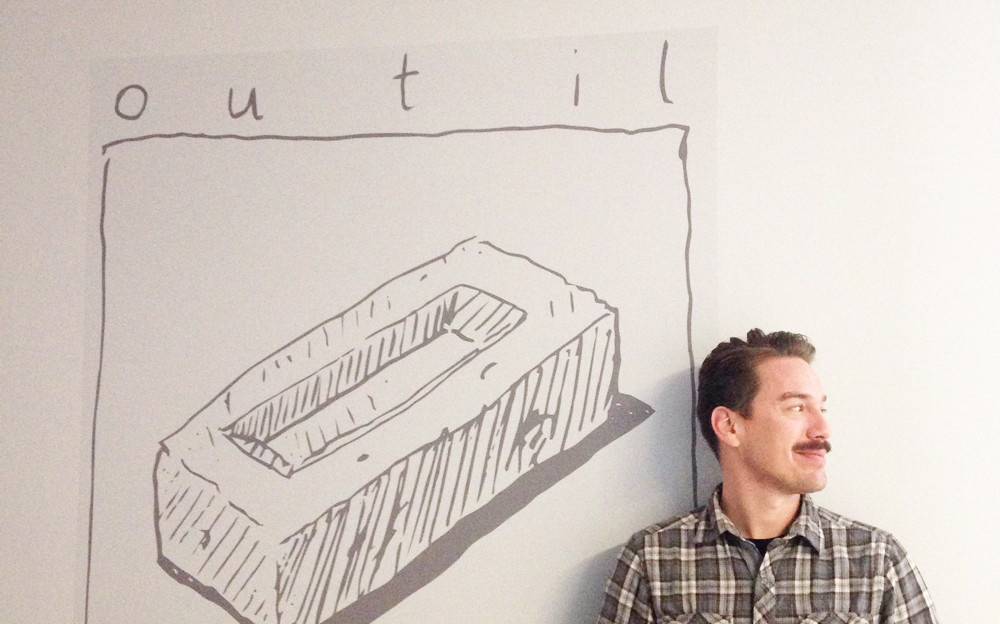Pages of Possibility
Kegan McFadden’s new exhibition reflects on the promises held by defunct Canadian art magazines
What would it feel like to walk through a magazine?
That’s the kind of experience curator Kegan McFadden is hoping to create with Yesterday was Once Tomorrow (or, A Brick is a Tool), a new exhibition opening Feb. 6 at Plug In Institute of Contemporary Art (ICA).
“[This] is not a typical show about magazines that ends up feeling like a library,” McFadden promises.
“[T]here is wallpaper based on the contents of the magazines, so we can read if we want, but also get a quick impression of what they felt like (all the funny design choices, the great writing by artists about artists, even the ads are interesting).”
Yesterday was Once tomorrow (or, A Brick is a Tool) includes excerpts from 60 issues of 5 different magazines McFadden selected. They were all active in the 90s, yet none exist anymore. “They each started out quite modestly, and they all got loftier and eventually folded. It is no coincidence that this happened at the outset of digital publishing and just before the Internet,” McFadden explains.
The exhibition recalls his own early experiences with a Winnipeg zine, The Plug In Harold. It was started by Jean LeMaitre and then taken up by Plug In as their official newsletter after LeMaitre moved to Toronto.
“I remembered picking up The Harold on my very first trips to Plug In as a teenager. I thought it was an amazing zine that was unlike anything I’d read at the time. They profiled artists, advertised for places like Ragpickers, and showed me the possibility of an art world I would come to know years later,” McFadden recalls.
In 2013, McFadden received the Manitoba/Quebec Creative Residency through the Manitoba Arts Council, which he used to do research at the Artexte library in Montreal. Through that research, he found three other magazines to complement the Harold: Texts (Calgary), Boo (Vancouver) and Cube (Montreal). Later on in Toronto, he added Flower to the grouping.
“These magazines represent a DIY time, culturally,” McFadden adds. “More important, artistically, there was less fear of making mistakes, a time before the over-professionalisation of artists.”
The DIY ethic is echoed in one of the workshops being offered in conjunction with the exhibition. Sappho Zine is offering a free workshop, “Cut & Paste with Sappho Zine” on Mar. 14.
While it’s a kind of retrospective, the title of the exhibition also reflects the spirit McFadden found among these creators. “The title points to the philosophy - or spirit - of the time. It’s not about dwelling on the past or really thinking too far ahead in terms of posterity,” McFadden says.
And while it may be a walk-through snapshot of a time and place(s), the exhibition has also created a place to reconnect and start again.
“What’s been so great and surprising is getting in touch with so many artists who contributed to these zines so long ago,” McFadden says, “and having them all be excited to re-invigorate the conversation.”
Published in Volume 69, Number 19 of The Uniter (February 4, 2015)







